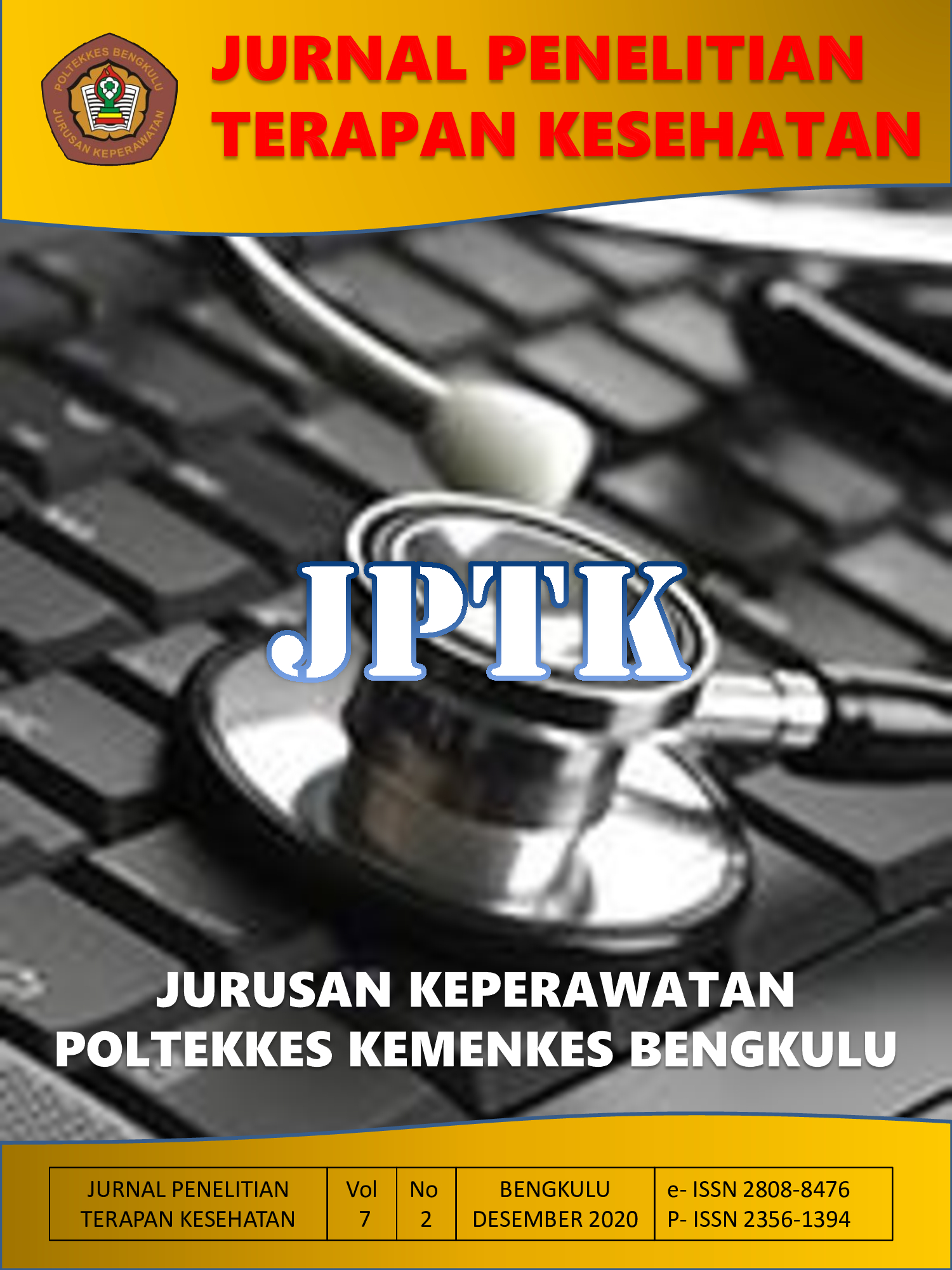FAKTOR YANG BERHUBUNGAN DENGAN PEMILIHAN KONTRASEPSI RASIONAL
DOI:
https://doi.org/10.33088/jptk.v7i2.14Abstrak
Abstract: Based on the 2017 IDHS, contraceptive use in Indonesia is (64%) including modern
contraceptive methods (57%) and traditional contraceptive methods (6%). The aim of this study
was to find out the factors related to the selection of rational contraception in the Jalan Gedang
Community Health Center Area. This type of research was analytical with a quantitative
approach using a cross sectional design. Sampling was done by accidental sampling technique,
which amounted to 91 where the sample in the study were all family planning acceptors in the
Jalan Gedang Community Health Center in Bengkulu City.This study used Chi square statistical
test with computerized system significance level p <0.05 where the results of the study stated that
the variables related to the selection of rational contraception were knowledge p = 0.048 and
acceptor attitudes p = 0.015, while unrelated variables were husband's support p = 0.981, the role
of health workers p = 0.166, and information sources p = 0.078. The factor most associated with
the choice of rational contraception is the attitude of the acceptor with the Exp value (B) =
4,275.Health services are expected to provide counseling and motivation especially the attitude of
acceptors to the selection of contraception in order to build awareness that rational contraceptive
choices are the right choice, and increase knowledge by disseminating information through
counseling, so that knowledge of family planning acceptors can increase.
Keywords: Rational, knowledge, husband's support, the role of health workers, acceptors'
attitudes, information sources






















